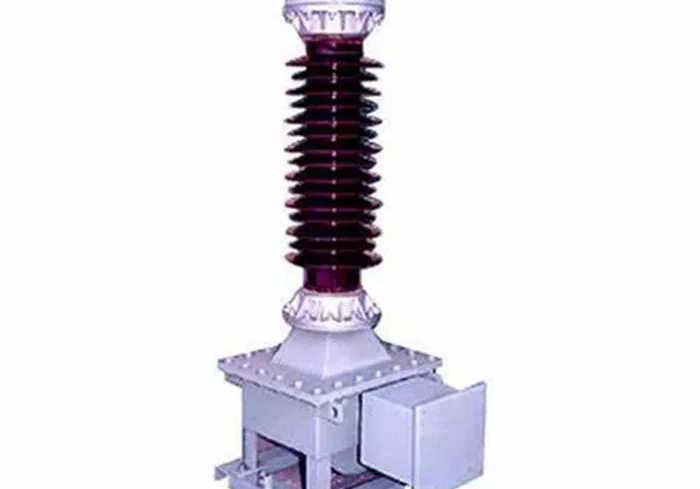Potential transformers (PTs), also known as voltage transformers (VTs), are essential components in electrical substations. They play a crucial role in ensuring the safety, efficiency, and reliability of electrical power systems. By transforming high voltage levels to lower, manageable voltages, PTs enable accurate measurement and monitoring of voltage, as well as the safe operation of protective devices
Basic Principles and Functions
Definition and Purpose
A potential transformer is a specialized type of transformer designed to reduce high voltage levels to lower, safer voltages suitable for measurement and protection devices. The primary function of a PT is to provide a proportional, reduced voltage output that accurately represents the high-voltage side of the power system. This allows for safe and accurate voltage measurement, which is essential for monitoring system performance, billing, and maintaining grid stability.
Working Principle
The working principle of a potential transformer is similar to that of a conventional transformer, based on electromagnetic induction. The primary winding of the PT is connected to the high-voltage system, while the secondary winding provides a lower voltage output. The voltage transformation ratio is determined by the turns ratio of the primary and secondary windings. For example, if the primary voltage is 110 kV and the turns ratio is 1000:1, the secondary voltage will be 110 V.
Safety and Isolation
One of the key functions of potential transformers is to provide electrical isolation between the high-voltage system and low-voltage measuring devices. This isolation ensures the safety of personnel and equipment by preventing direct exposure to high voltages. By stepping down the voltage, PTs also enable the use of standard, low-voltage instruments for measurement and control.
Types of Potential Transformers
Electromagnetic Potential Transformers
Electromagnetic potential transformers are the most common type used in substations. They consist of a magnetic core and windings, similar to a conventional transformer. These PTs are suitable for a wide range of voltage levels and provide accurate voltage transformation. They are commonly used in distribution substations and industrial applications.
Capacitive Potential Transformers
Capacitive potential transformers (CVTs) use a combination of capacitors and an electromagnetic unit to transform voltage. The capacitor network divides the high voltage, and the electromagnetic unit steps it down further to a suitable level for measurement. CVTs are often used in high-voltage transmission substations due to their compact size, low maintenance requirements, and ability to prevent ferromagnetic resonance.
Inductive Potential Transformers
Inductive potential transformers use an inductive coil arrangement to achieve voltage transformation. They are less common than electromagnetic and capacitive types but offer good accuracy and stability. Inductive PTs are primarily used in medium to high-voltage applications.
Applications in Substations
Voltage Measurement
Accurate voltage measurement is critical for monitoring the performance of electrical systems. Potential transformers convert high primary voltages to standardized secondary voltages (e.g., 120 V or 240 V) that can be measured by standard voltmeters. This precise measurement is essential for maintaining grid stability and ensuring efficient power transmission.
Protection and Control
PTs play a vital role in the operation of protective relays and control devices. These devices use the voltage signals from PTs to detect abnormal conditions such as overvoltage or undervoltage, which may indicate faults or disturbances in the power system. In response, protective relays can trigger actions such as opening circuit breakers to isolate faulty equipment and protect the integrity of the grid.
Metering and Billing
Potential transformers are integral to metering systems used for billing purposes. Accurate voltage measurements provided by PTs ensure that customers are billed correctly for their electricity consumption. This promotes fairness and transparency in the utility industry.
Importance of Potential Transformers
Ensuring Safety
By stepping down high voltages to safer levels, PTs protect personnel and equipment from the hazards associated with high-voltage systems. This isolation is crucial for the safe operation of substations and the prevention of electrical accidents.
Enhancing Reliability
Potential transformers contribute to the overall reliability of electrical systems by providing accurate voltage measurements and enabling the proper functioning of protective devices. Their ability to detect and respond to abnormal conditions helps maintain the stability and integrity of the power grid.
Promoting Efficiency
PTs ensure that voltage levels are accurately measured and controlled, which is essential for efficient power transmission and distribution. By minimizing energy losses and maintaining optimal voltage levels, they help improve the overall efficiency of electrical systems.
Practical Considerations and Design
Accuracy and Linearity
High-quality potential transformers are designed to provide accurate and linear voltage transformation. This ensures that the secondary voltage is a precise representation of the primary voltage, which is essential for reliable measurement and control.
Thermal Management
Effective thermal management is critical for the longevity and performance of potential transformers. Proper cooling systems and materials are used to dissipate heat generated during operation, ensuring that the transformer operates within safe temperature limits.
Insulation and Durability
Robust insulation and durable materials are essential for the safe and reliable operation of potential transformers. These components must withstand high voltages and harsh environmental conditions, ensuring long-term performance and reliability.
Future Trends and Innovations
Smart Transformers
With the increasing adoption of smart grid technologies, potential transformers are being integrated with advanced monitoring and control systems. These smart transformers can provide real-time data on voltage levels, enabling more efficient grid management and predictive maintenance.
Improved Materials and Efficiency
Advancements in materials science and manufacturing techniques are leading to more efficient and durable potential transformers. New materials such as amorphous metals and high-temperature superconductors promise to improve performance while reducing energy losses.
Conclusion
Potential transformers are indispensable components in substations, providing critical functions such as voltage measurement, protection, control, and isolation. Their ability to step down high voltages to safer levels ensures the safe, reliable, and efficient operation of electrical power systems. As technology continues to advance, the role of potential transformers will remain crucial in maintaining the integrity of our electrical infrastructure. Understanding their importance and applications is essential for engineers, technicians, and anyone involved in the design, operation, and maintenance of electrical systems.
Related Topics:

